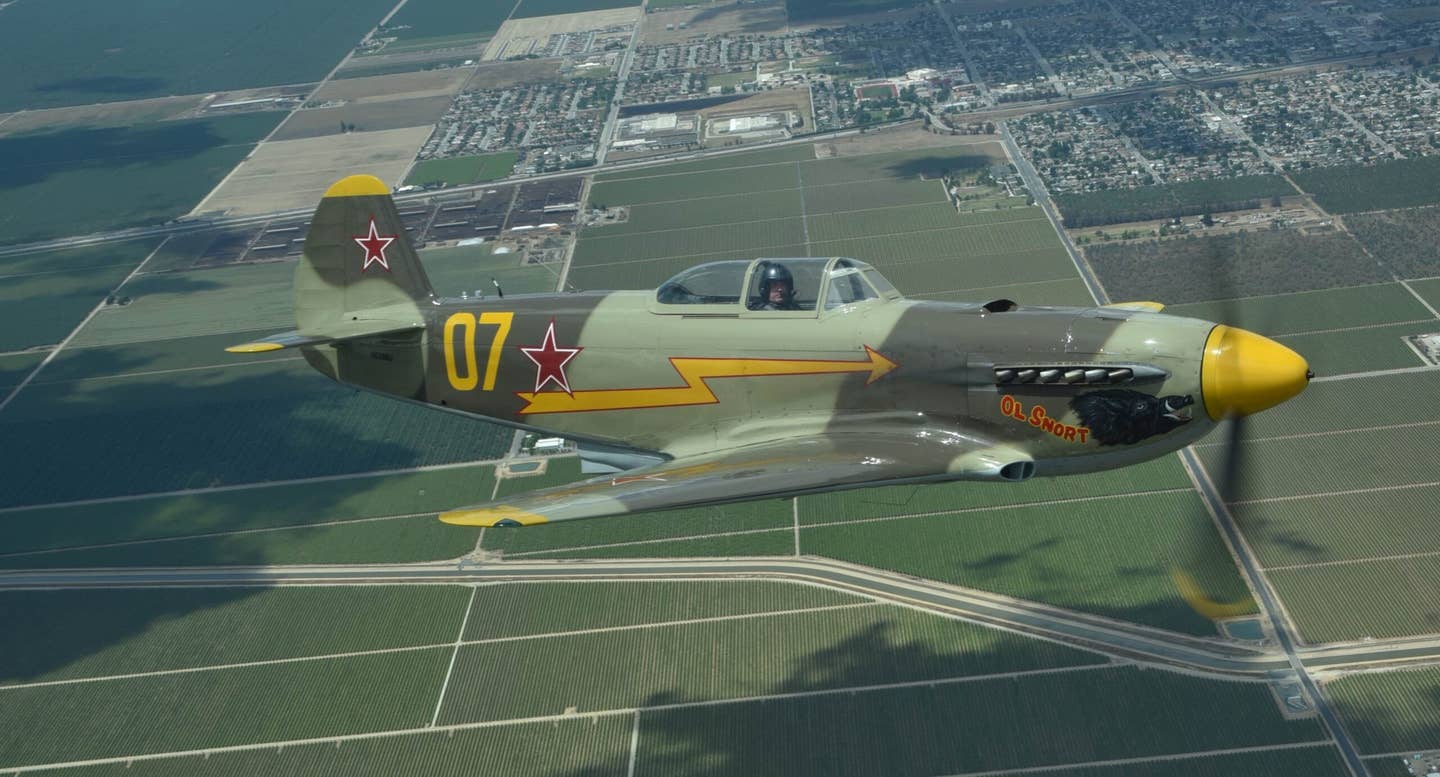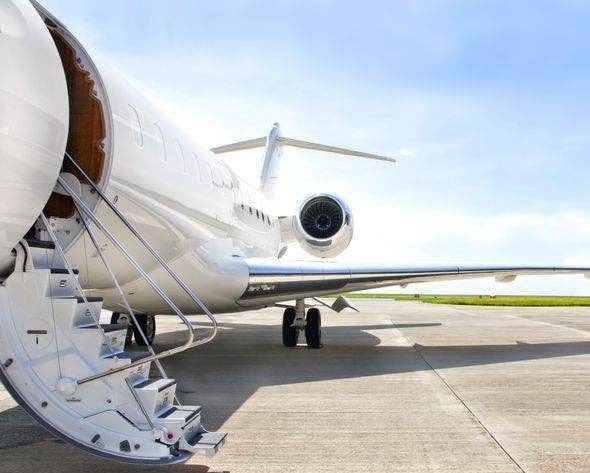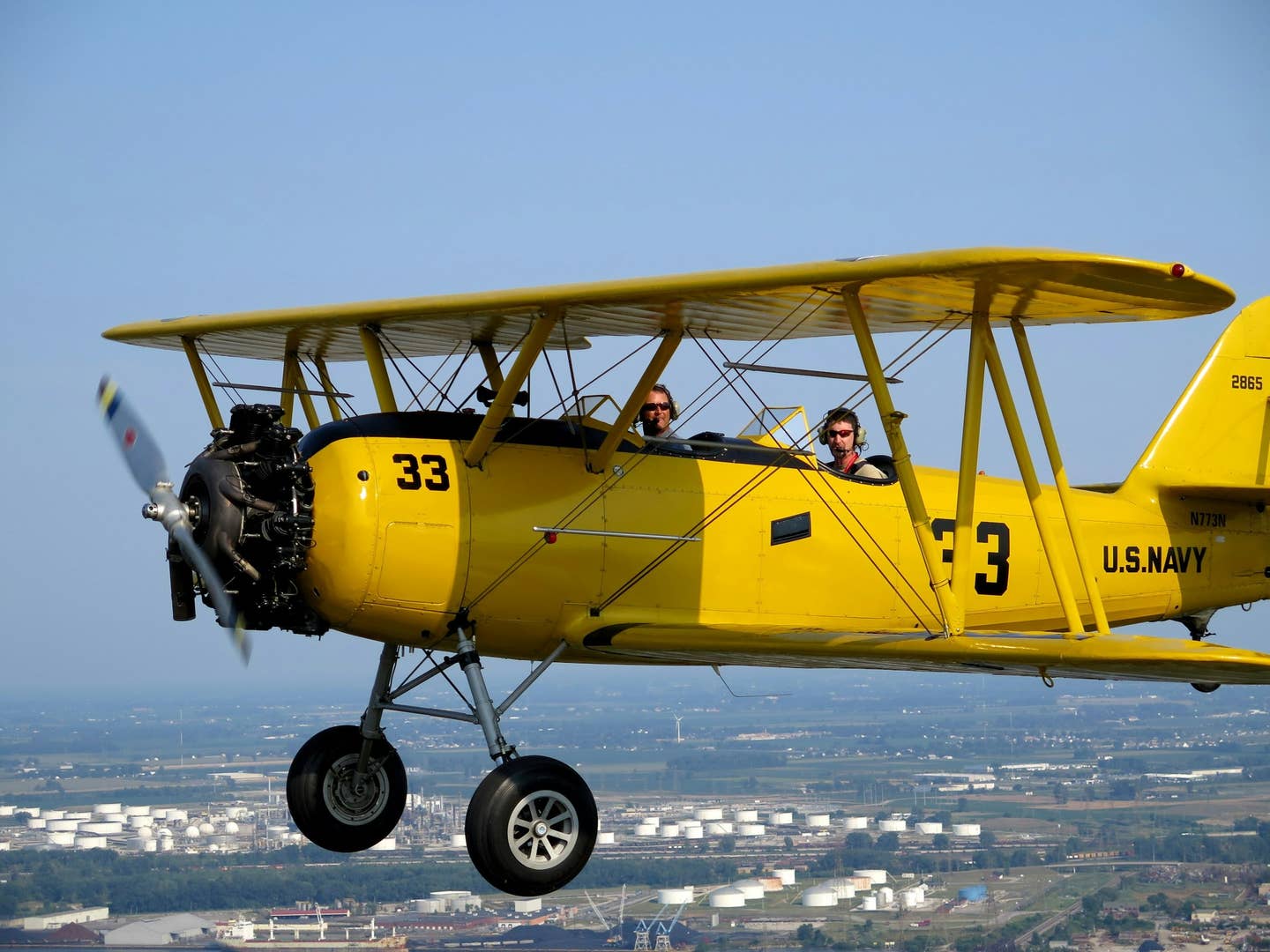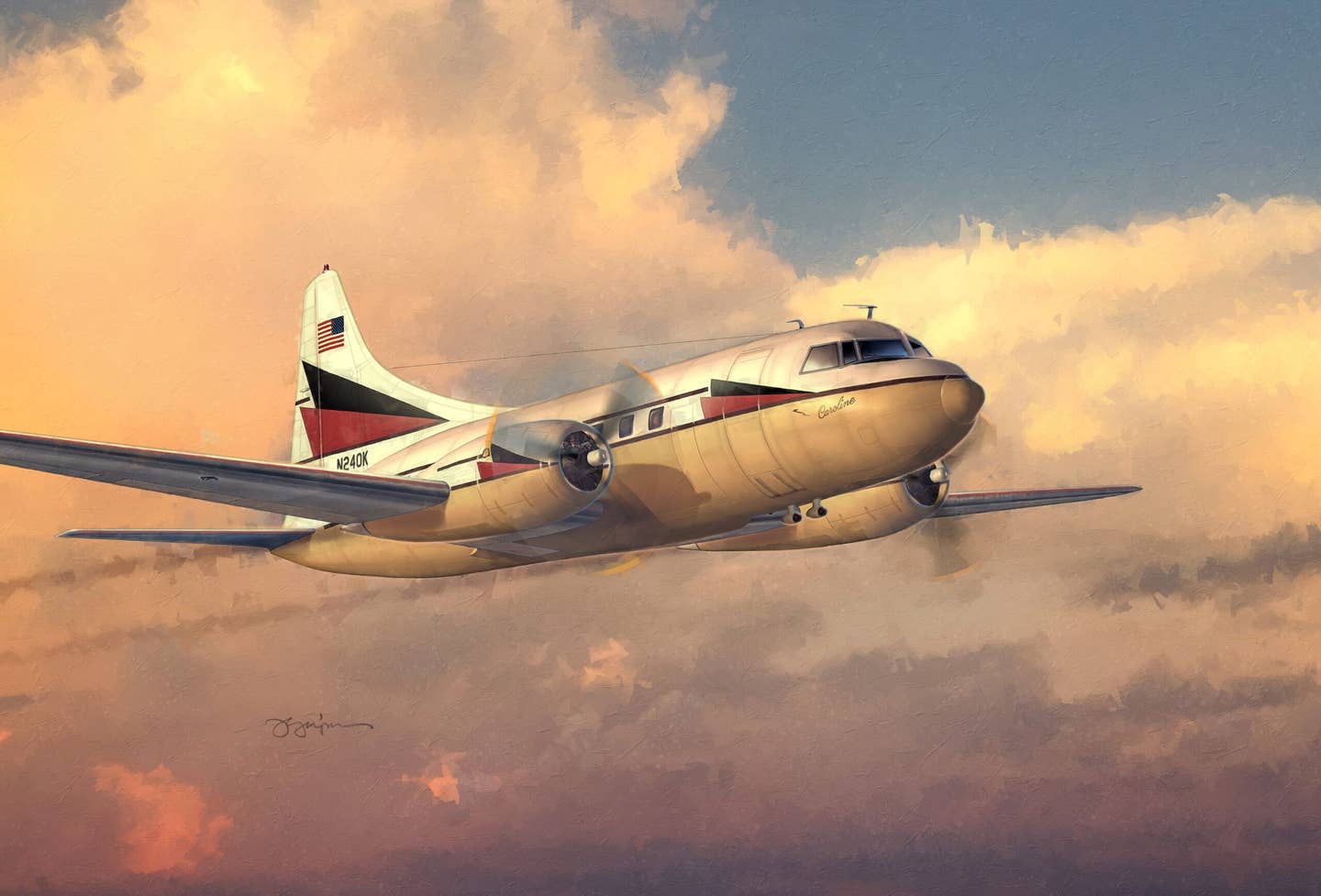
Embraer Legacy 650
__One of the things I love best about airplanes is their back stories. While the **Embraer Legacy 650** is a brand-new airplane, its story stretches back 30 years to when the Brazilian company first decided to start building airliners.
My personal tour of the cockpit of the Embraer Legacy 650 immediately reminded me of the airplane’s airline heritage. Its massive console, extensive collection of overhead panel switches, heavy-duty sideways-tracking crew seats, array of colorful displays stretching across the wide span of the panel, jumpseat and secure door all painted a picture of an airplane that originally was built for revenue flying, for the constant start-ups and bumpy landings, for the thousand hours a year, or more, of flying, and for all of the abuse that implies. At least up at the front of the airplane, the 650 still has all the airliner trappings.
From the crew door back, however, it’s even clearer that the Legacy 650, which earned certification earlier this year, is all business — or pleasure. The transformation from people mover to business machine is remarkable.
To create the jet, Embraer improved upon the large and comfortable cabin of the company’s successful Legacy 600 bizjet and added power, extra range, enhanced avionics, improved hot-and-high capability and even greater luxury to create an airplane that’s very much like the Legacy 600 but better in just about every way.
All other improvements aside, the additional range was the driving factor in the creation of the 650, since many of Embraer’s customers had been asking specifically for that feature. As much as they loved the 600’s creature comforts, they needed the extra range to connect some city pairs that the 600 just couldn’t link. For a remarkable number of those highly desirable city pairs, the 650 succeeded in doing just that and then some.
Legacy Times Two
Exactly how a company arrives at a business jet — and there are a number of paths that can lead to that ultimate product — is a story in itself. In this case, the story is that of a successful airliner manufacturer that decided to test the business jet market by first dipping a single toe in the water. The instrument of that tentative foray was the Legacy. It was, in essence, a bizzed-up version of the company's remarkably successful regional airliner. Embraer has to date sold more than 1,100 of its ERJ 135 and ERJ 145 regional jets. But 10 years ago, how well a business version of an RJ would sell was anybody's guess.
The name Legacy might seem an odd choice for an airplane that, in the case of the Legacy 600, was the first business jet the company built. The name actually refers to the fact that the 600 is a part of the company's airline legacy. It's more than mere wordplay; in the rarified air of $20 million-plus business aircraft, the 600's airliner heritage is as good as gold. The dependability of Embraer's RJs, as well as its worldwide service center network for them, add up to built-in peace of mind for buyers along with an enviable dispatch reliability record, something that you don't get with every bizjet.
That original Legacy was as hard to classify then as it is now, but one thing was evident: Its cabin was spectacular. While not quite as wide as that of some competitors, it had the distinction of offering three separate seating sections instead of the traditional two.
In many ways it was a lot more airplane, with more room and range, than any of the midsize jets on the market at the time, and it cost millions less than the larger bizjets against which it wound up competing, much to Embraer’s surprise. The unique value proposition that the Legacy presented — a lot of cabin and decent range and speed on an extremely reliable airline platform — was compelling, and Embraer sold many more of that first bizjet than it ever imagined it might. The Legacy 600 was certified in 2002, and Embraer made the first delivery shortly thereafter. Immediately, it was competing with established models from the likes of Bombardier, Gulfstream and Hawker, and winning market share. Embraer has sold hundreds.
Indeed, the success of the jet convinced the decision-makers in Embraer's home of São José dos Campos, Brazil, an hour's drive from bustling São Paulo, that business aviation was a market it simply had to be a part of. So it dove right in. The result, as we now know, was a pair of successful light jets, the Phenom 100 and Phenom 300, the introduction of the huge Lineage 1000 ultralong-range bizjet (based on the company's E-Series airliners) and the fast-track development of a pair of midsize airplanes, the Legacy 450 and 500, the latter of which is expected to make its first flight later this year.
Getting to 650
The goals behind the creation of the 650 were really very simple: Give it around 500 nm greater range than the 600; update the engines for better fuel efficiency (important for goal number one, obviously); improve the already terrific cabin, and give the pilots the latest safety utilities. While all of these improvements sound as though they could be made simply by substituting new components for old, nothing could be further from the truth. The 650 really is a new airplane, and not just in terms of its type certification.
The first hurdle was a well-known one. In order to add that much range, it was necessary for Embraer to increase the airplane’s fuel capacity, which it did by adding a ventral tank and some additional wing fuel, which added nearly 2,500 extra pounds of fuel in total. This increased the 650’s total fuel capacity to 20,600 pounds, greater than 2,000 pounds more than the Legacy 600’s. While they were at it, Embraer engineers also redesigned the fuel delivery and refueling systems for greater flexibility and reliability. They started by replacing the hydraulic tank valves with electromechanical units; this allows fueling to begin right after the ship’s power comes on.
Embraer also beefed up the wings, replacing the tips with detachable winglets (instead of blended units) and strengthening the flap panels and actuators for higher full-flap speeds and increased Vmo. All of this, while not technically necessary to accommodate the added fuel capacity, adds utility and versatility and makes descents quicker, saving precious minutes in the arrival process.
Higher arrival speeds mean the potential for greater bird strike damage, so the 650 got a new windshield with glass replacing the polycarbonate. The glass boasts better light transmission, less distortion and higher all-around reliability, because it’s stronger.
The higher weight of the airplane meant updating the landing gear as well, which Embraer did by going with larger, 16-inch main wheels and brakes, as well as what it calls a “recalibration” of the nose gear strut to accommodate the change to the main gear. Interestingly, the 650 is officially five inches shorter in height than the 600, because of its greater weight.
Speaking of weight, the 650, it goes without saying, has a higher maximum takeoff weight (53,572 pounds) than the Legacy 600 (49,604 pounds). Still, the 650 boasts a much greater full-fuel payload than the 600, 1,910 pounds, more than 400 pounds greater. This gives the 650 the ability to carry as many as nine passengers with full fuel, a remarkable capability for a long-range airplane.
Despite this newfound power, the improved engines add up to very similar fuel burns for similar missions. On a typical 1,000 nm mission, for instance, the 650 uses around 3 gallons more total than the 600 does. Indeed, the direct operating costs for the two airplanes, as determined by Embraer, are almost identical.
Coming up with an additional 500 nm of range can’t be done just by adding more fuel, because the fuel adds weight, which requires stronger structure, which adds weight too, and weight cuts down on range. So you need to economize elsewhere, and in this case it was with new, more powerful and more fuel-efficient engines in the form of the Rolls-Royce AE 3007A2.
While they are close derivatives of the AE 3007A1E engines that power the Legacy 600, the Rolls-Royce AE 3007A2 engines on the 650 are a crucial piece of the puzzle. Embraer refers to the new turbofans as “refinements” of the previous models; if so, they are impressive refinements. The new turbofans feature full authority digital engine control, or fadec, and they are more fuel efficient thanks to a next-gen fan, cutting-edge fadec software and a pilot interface that makes it easy to economize. And they do all this while increasing thrust by more than 1,000 pounds per side.
The key to the new engine is a new fan, which uses blades with a wider chord and more contoured leading edge, as well as subtly changed fan spinner and bypass vanes. The wider chord means fewer blades; if you had the inclination, you could count them. There are 22, compared with 24 blades on the previous engine.
While the Rolls-Royce engines powering the Legacy 600 are powerful, quiet and fuel-efficient, the new model offers noteworthy improvements in all of these areas. While there’s been much talk in the industry about business aviation “going green,” the truth is that greener engines are a trend that has been 40 years in the making; the Rolls engines on the 650 are a continuation of that trend. These engines decrease carbon emissions by almost 30 percent compared with older-generation turbofans (not even turbojets). Moreover, they cut emissions by up to 22 percent, Embraer claims, compared with some current-generation jets. They’re also remarkably quiet, satisfying Stage IV noise standards, which makes the 650 eligible to land at some of the world’s most noise-sensitive airports, which are, not coincidentally, some of the most desirable bizjet destinations.
The end result of this long and beautifully executed engineering exercise was exactly what Embraer was hoping it would be, an airplane that will link a number of attractive city pairs and that will attract buyers who want to fly between those cities. The Legacy 650 will fly up to 3,900 nm nonstop with four passengers or 3,800 nm with eight, allowing the jet to fly between London and New York, Dubai and London, Dubai and Hong Kong, Singapore and Sydney, and Miami and São Paulo, among many others. And the improved hot-and-high performance of the new Rolls engines allows it to fly in and out of challenging airports in Dubai, Colorado’s Aspen and Telluride, and Toluca, Mexico, on some of their worst days.
In the Cockpit
My flight in the Legacy 650 started out of Embraer’s home base of São José dos Campos, in the Brazilian state of São Paulo. It was a mild winter day — winter being the season for July in the Southern Hemisphere. An early-morning marine layer had burned off an hour earlier, and we had clear skies and slightly higher than standard temperatures for our flight.
I’m still getting used to fadec. On the 650, you start the engines by moving a switch to the “run” and then “start” positions and then simply monitor their progress. If something were to go wrong with the start, the fadec would take care of it for you. No guarding of the throttle is necessary.
Once I had both engines running, we were ready to taxi. It takes a burst of throttle to get the 650 rolling, one hand on the big throttles, or power levers, and the other on the tiller, which is mounted on the forward left sidewall. The tiller is used for all taxiing, though the rudder pedals will give you the last few supplemental degrees for sharp turns, if needed. The 650 is very sensitive to tiller input, and it would take some practice to get to the point where the taxi ride is nice and smooth.
In the right seat for my flight was Embraer test pilot Rogerio Ozay, who’d asked if I preferred to make communications in Portuguese or English, the universal language of air traffic control. I knew from previous experience flying in Brazil that, even if we chose English, the rest of the communications from the controllers and other airplanes was certain to be in the native language of Brazil. Portuguese it was, and that was Ozay’s department.
Once lined up on Runway 15, I advanced the throttles to the stops — they’re fadec, remember, so there’s no need to have the copilot set power at this point — and commenced the takeoff roll. Being slightly light, we hit V1 quickly; seconds later, when we were at our rotation speed, 117 knots, I pulled back to rotate and then, as Ozay had instructed, pushed forward — fairly dramatically, in fact — to maintain 14 degrees of climb attitude. I commanded gear up on positive rate and flaps up at 400 feet, and we were on our way up.
The 650 is a strong climber. Even at 25,000 feet and 225 knots indicated, the rate of climb was around 2,500 fpm at around 280 gallons per hour. The 650 can climb directly to its ceiling of 41,000 feet, which saves on time and fuel compared with airplanes that need an intermediate level-off to burn fuel before proceeding to 41,000 or higher.
While its speed is good, the 650 is not a barnburner — it is a Mach .78 to Mach .80 airplane at cruise, though it can do that speed remarkably economically for a jet of its size. At the flight levels, remember, economy is equal to range. For our flight, we commanded Mach .77 and were rewarded with a fuel burn of 1,100 pounds per hour.
Our descent was typical of the 650. At 290 knots the airplane comes down at around 3,000 fpm, and even below 10,000, the rates of descent can stay high if needed without overspeeding, thanks to the increase in Vmo below 8,000. Also, the flap speed has been increased. Full flaps can be commanded at speeds as high as 160 knots, which makes arrivals easier to plan.
Again, for such a large airplane, the 650 hand-flies very nicely. It is easy to maneuver, with a trim system that feels very natural with a response that is not too fast and not too slow. The big “ram’s horn” yokes provide plenty of authority, and the controls (hydraulic for the ailerons and rudder and mechanical for the elevator) are nicely harmonized.
Back in the pattern, the airplane demonstrated these nice qualities. After a purposely missed approach (more on this in a bit) we flew a standard traffic pattern back in for the landing. On approach, the 650 flies very much like an airliner, though at speeds — our Vref was 124 knots — that are not fast by large bizjet standards. The spool-up time on the big Rolls engines is understandably longer than I’m used to on the CitationJet. This requires that the pilot watch the trends closely and make power changes before the airspeed degrades and not afterward.
We touched down just beyond the aiming point, and per Ozay’s request, I brought the airplane to a stop using only the thrust reversers. That’s another benefit of added power that you don’t hear much: increased reverser power.
Avionics a Big Deal
Our purposely missed approach back home to São José dos Campos was intended to demonstrate Honeywell’s SmartLanding utility. While it felt strange to purposely aim a thousand feet beyond the aiming point, the system warned that I was too fast and that I was landing long, that I was “too high,” then “too fast” and finally that the approach was “unstable.” It’s great confirmation that an approach needs to be abandoned.
The system is dependent on the new avionics in the 650. While the layout of the panel looks nearly identical to that of the Legacy 600, the 650 features the Primus Elite cockpit, which was a Flying magazine Editors' Choice award recipient last year. The system ingeniously swaps out LCDs for the former CRT displays in the Primus 1000 in previous Legacy jets. Because the form factor of the displays remains the same, the avionics upgrade was fast and extremely cost-effective.
Most importantly, the new panel gives pilots of the 650 great new safety utilities, including Honeywell’s SmartLanding and SmartRunway. Both are designed to cut down on the chance of an accident on the runway, which remains one of the most common types of business aircraft accidents.
But the new displays do much more than that. They give pilots graphic satellite weather. Jeppesen terminal-procedures charts display very nicely on the dual MFDs. There’s also vertical navigation integrated into the system that can fly vertical profiles calculated by the FMS that include both speed and altitude restrictions. These can be entered into the FMS, but they abide by the airplane’s operating limitations.
The system is also compliant with required navigation performance (RNP) 0.3, which allows for approaches (including curved approaches) with vertical guidance. We flew the VOR DME approach to Runway 15 with the FMS commanding the descents and level-offs and flying the entry and missed approach segment as well. Additionally, the system is compliant with future navigation (FANS 1A) and allows for datalink communication with the controller via satellite. I sent a test message to a center controller and received a reply in return, complete with a pop-up message on the PFD and an audio alert that an ATC message had arrived. This is how many en route clearances will be handled in the future, with HF radio being relegated (thankfully) to backup duties. Primus Elite also brings with it WAAS and LPV approaches, which provide even lower minimums than RNP does.
If there’s anything negative to be said about Primus Elite, it’s that it makes use of the smaller display formats from the previous avionics suite. I don’t think that’s much of a downside, however. When it comes to display size, I’m not convinced bigger is always better. The question has to be: Are the displays large enough to give the pilots what they need to optimally operate the airplane? In the case of the Primus Elite, the answer is a resounding yes. The additional upside — reduced weight, better reliability, more operational flexibility, added safety utilities and more — make it a slam-dunk. Primus Elite is a winner.
Cabin Class
The cabin of the Legacy 650, Embraer claims, is what sets the airplane clearly apart from its competitors, and its cabin is admittedly hard to ignore. With three seating sections, an extensive galley, one of the (if not the) nicest lavs in the segment and a pressurized, climate-controlled baggage area in which you could play a game of touch football, the Legacy makes great use of all that space.
With an interior that can comfortably seat 13 and a six-foot stand-up cabin, the digs are decadent even by bizjet standards. The interior is all new, and Embraer has improved the already good headroom along the sidewalls with new lower-profile valences. On the 650, the company made a commitment to sound reduction too, tracking down sources of noise and mitigating them wherever possible. Even in the cockpit this was true. A new line of vortex generators atop the fuselage just aft of the windscreen helps energize the airflow and cut noise.
The cabin is broken up into three groups of club seating sections, though it can be optionally modified with a combination of side-facing divans in the aft cabin that can fold out to create a large bed. Many of the seats are berthable as well. An airplane with eight hours of endurance is going to get lived in. The galley of the 650 is new and spectacular, featuring all of the space and appliances for serving multiple fine meals en route.
On an airplane of this caliber, you’d expect the connectivity to be great, and it is. Passengers can make use of the cabin network system, with optional high-speed data through SwiftBroadband, to browse the Internet, send e-mails and transfer files with the headquarters while in flight, allowing the 650 to be in essence a high-flying office that gives busy executives the option to keep abreast of business even when traversing oceans.

Sign-up for newsletters & special offers!
Get the latest FLYING stories & special offers delivered directly to your inbox






